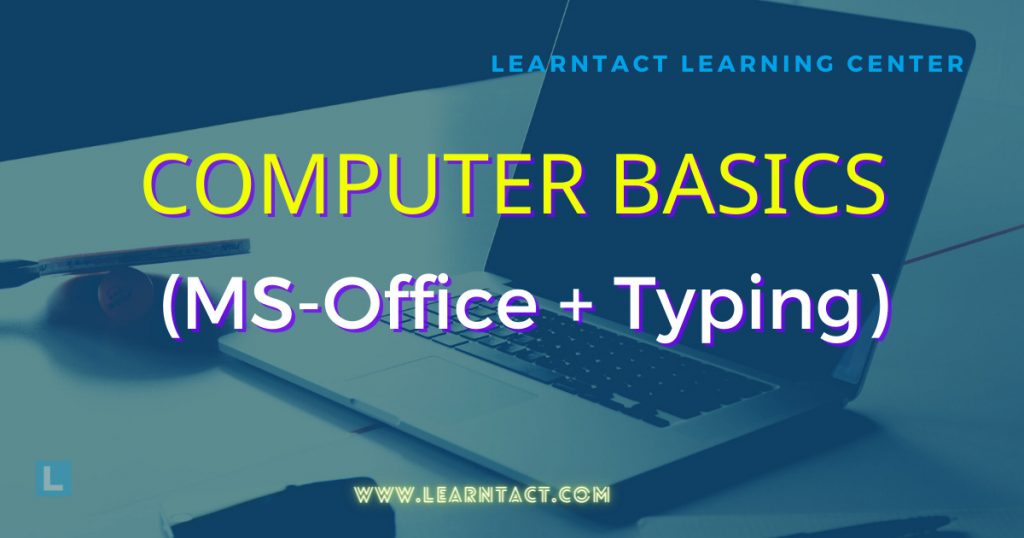- Description
- Course Content
- What you'll learn?
If you never used computer before or an advanced user, this course is perfect for you. We start with a basic introduction of computers along with explaining all the technical concepts like Operating System, Hardware, Resolution, Files and Formats used in computer. This will be later helpful for you when you are purchasing a computer. After the introduction you'll learn how to use common applications on computer and then proceed to learn Microsoft Office which is widely used everywhere from colleges to corporate offices. For more information on which topics are covered, you can see the next section i.e., course content.
Learning how to use computer increases your productivity and, with a good understanding of the software running on them, you become more productive at everything you do. For example, once you have a basic understanding of using a word processor, you can create, store, edit, share, and print documents and letters. Each of these things was either impossible or slower with all pre-existing technologies. Computers are capable of storing and accessing vast amounts of information. You can store thousands of books, documents, movies, pictures, and songs digitally and quickly find what you need with a search and share information between devices. It eliminates the need for paper and plastics used to make non-digital versions of the media.
Computers will give you a better understanding of data and big data. For example, if you are a business owner, you obviously need to maintain a database of items to be sold. Using that data, computers can quickly identify what sells best at what time of year, when to mark up or down items, and what items are not selling. Having access to this type of information can give the business a better understanding of their customers and a competitive edge against their competitors. Computers help keep you connected with long distance friends and family over e-mail and social networking. Being able to connect to people all around the world is also an excellent way to meet people you would normally never meet. All the Internet Basics are covered in this course.
Communication on the Internet is fast compared to other forms of communication. For example, you could send someone an e-mail on the other side of the planet, and have it arrive in less than a few minute. And that's not all, computers will keep up-to-date with all the latest news, weather, and stories around the world. You could even learn a new profession by reading websites or watching videos.
1) Introduction
- Operating System (OS), Processor, Computer Types, Software vs Hardware
- Run Commands
- Resolution
- Storage
- Files and Formats
2) Accessories:
- Calculator
- Notepad
- Paint
- WordPad
- Command Prompt
- A to Z Shortcut Keys
3) Microsoft Office
- Microsoft Word: Font, Insert, Margins, References, Mailings, Review, View, Macros etc
- Microsoft Excel: Font, Conditional Formatting, Pivot Table, Charts, Margins, Formulas, Data Validation, Sort, Filter, Track, Gridlines, Freezepanes, Macros etc
- Microsoft PowerPoint: Different types of Slides, Insert, Themes, Animations, Transitions, Slideshow, Protect, Notes
4) Internet Basics
- Browser shortcuts
- Creating & Sending e-mail
- Google Search Operators
- Other shortcut Keys
After the completion of this course, you can
- Perform any scientific calculations and conversions (like Feet to Inches, Hectares to Yards etc)
- Create/Resize images using Paint (helpful when submitting your passport photos for any online applications)
- Use computer through "Run" commands
- Use shortcut keys to operate computer
- Create Word Documents, Letters in different paper sizes
- Use different Fonts, customize your documents with perfect margins for printing
- Add references to your word documents (useful if you are creating any journals, book publishing)
- Send customized emails to multiple recipients at once (useful to address all the employees of a company at a time)
- Proofread your documents before printing with automatic spell & grammar checks.
- Review your documents and track changes
- Compare two documents and find the differences
- Protect your documents to prevent unauthorized accesss
- Create Macros to automate repetitive things
- Learn how to enter, modify, sort, filter data in spreadsheet
- Apply conditional formatting to your data for clear visualization.
- Use Pivot Tables to summarize complicated data
- Insert Hyperlinks to your data and add any theme you like
- Set proper margins to your spreadsheet so they don't look distorted when printed
- Apply various Logical, Text, Date, Math and LookUp formulas to your data
- Audit your excel formulas for error checking or to trace precedents/dependents
- Load data to your spreadsheet from multiple sources
- Apply Data Validation and remove duplicate entries
- Consolidate your data and conduct What-If analysis
- Group/Un-group your data based on different criteria and calculate SubTotal for each group
- Proofread and Protect your workbook
- Learn how to contain data in a single window by freezing them into individual panes.
- Create beautiful presentations or slide-shows (commonly used in software/corporate offices)
- Apply different themes and animations to your presentations and add sound/video effects
- Record your narration and rehearse timings before presenting
- Add notes to your presentation
- Learn how to use Internet
- Create and send e-mails to anyone
- Learn shortcuts to help navigate browser
- Learn how to use common websites like YouTube, Google, Facebook, WhatsApp
- Learn advanced Google search operators to find information quickly
- Learn many computer shortcuts that make your work easier.
